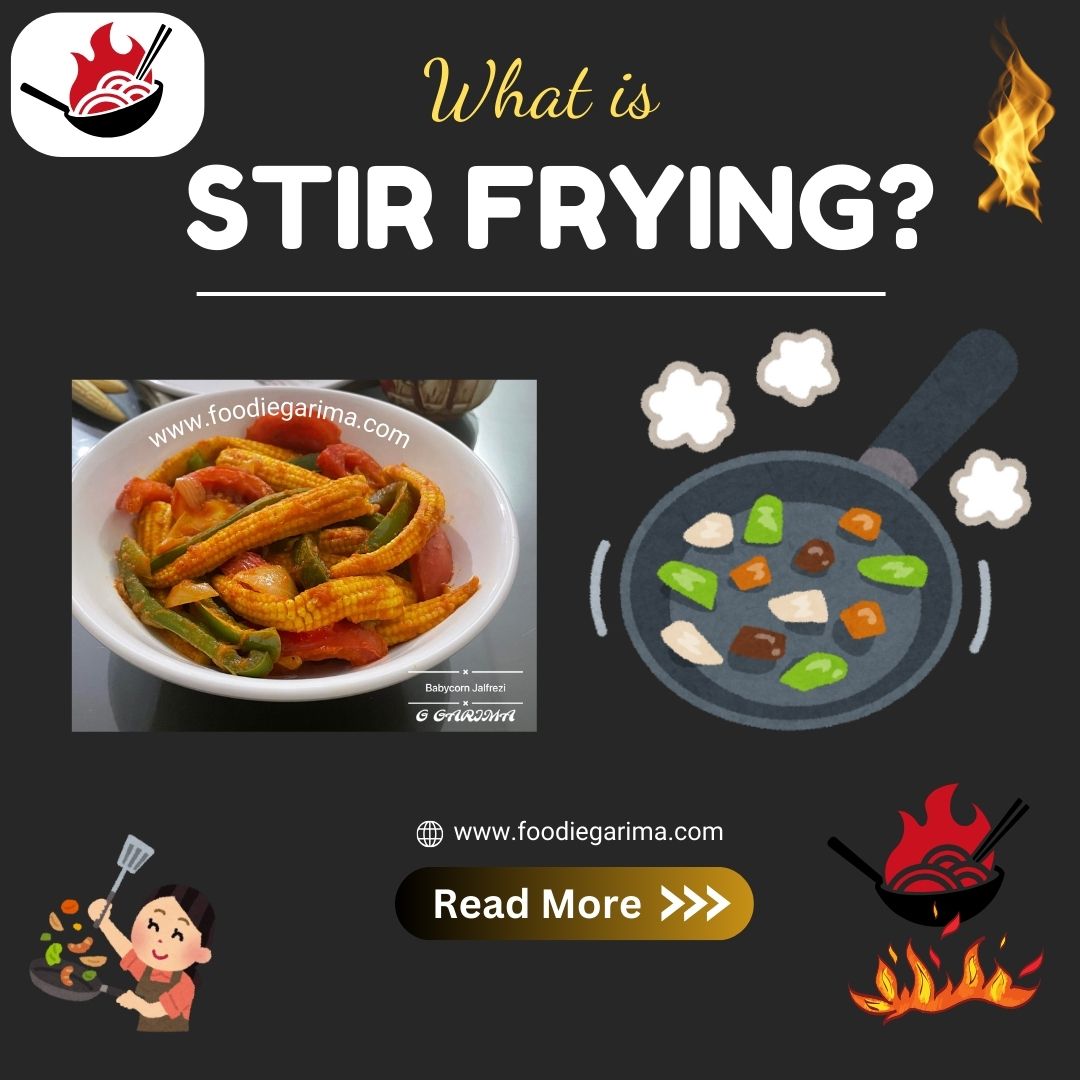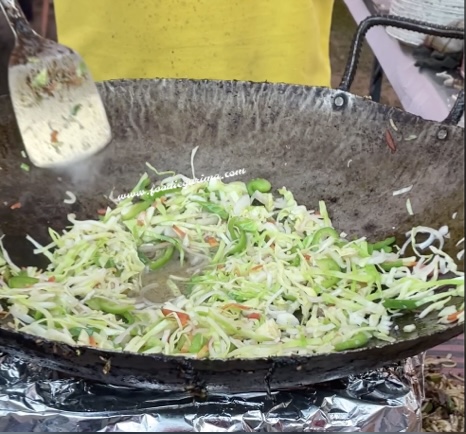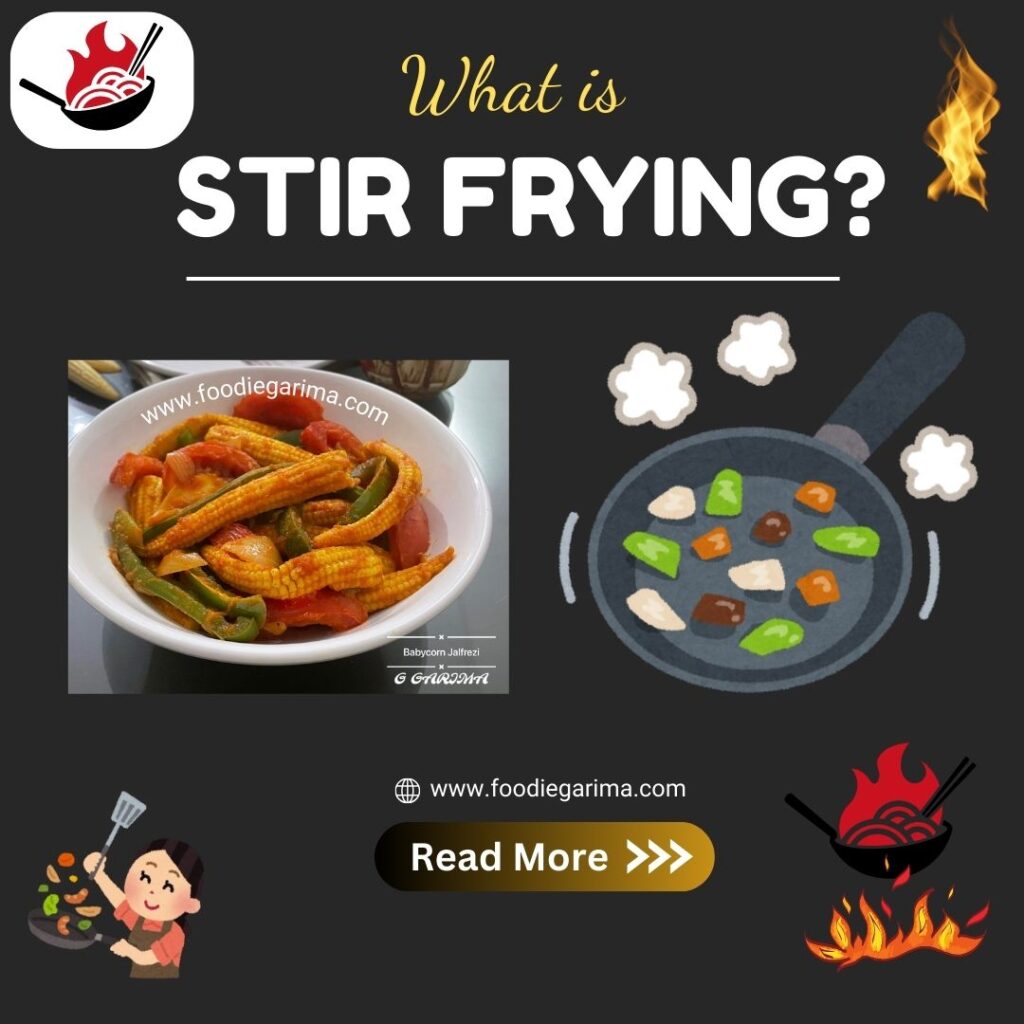9 January, 2025
What is Stir-Frying? Why Vegetables Stay Crisp in Stir-Frying

Stir-Frying
When it comes to cooking that is fast, versatile, and nutritious, Stir-Frying holds a special place in the hearts of food enthusiasts worldwide. Originating from the ancient kitchens of China, this technique has evolved to become a global favorite, gracing dinner tables with its vibrant colors and bold flavors. Let’s dive into the art of Stir-Fry and explore why it’s a must-have skill for every home cook.
What is Stir-Frying?
Stir-frying is a high-heat cooking method that involves tossing ingredients in a small amount of oil in a wok or skillet. The hallmark of this technique is its ability to cook food quickly while preserving its texture, flavor, and nutritional value. With endless combinations of proteins, vegetables, and sauces, stir-frying is a creative playground for cooks of all skill levels.
The Essentials for a Perfect Stir-Fry
1. The Right Tools
- Wok or Skillet: A wok is the traditional choice, offering even heat distribution and ample space for tossing. A large skillet works as a great alternative.
- Spatula or Wooden Spoon: A sturdy utensil helps you maneuver ingredients efficiently.

2. High-Quality Ingredients
- Opt for fresh, seasonal vegetables and high-quality proteins.
- Pre-cut all ingredients into bite-sized pieces for even cooking.
3. High-Heat Oil
- Choose oils with high smoke points, such as peanut, sesame, or vegetable oil, to prevent burning.
4. Flavorful Sauces and Seasonings
- Soy sauce, oyster sauce, hoisin sauce, and chili paste are staples. Customize with garlic, ginger, and fresh herbs for depth.
The Science Behind the Crunch: Why Vegetables Stay Crisp in Stir-Frying
Stir-frying is celebrated not only for its speed and flavor but also for the delightful texture it imparts to vegetables. Achieving that perfect crunch is not just an art—it’s a science. Let’s explore the factors that make stir-fried vegetables retain their crispiness and why this technique is a favorite among chefs and home cooks alike.
The Role of High Heat
One of the fundamental principles of stir-frying is the use of high heat. When vegetables are exposed to intense heat:
- Surface Sealing: The high temperature quickly seals the surface of the vegetables, creating a barrier that locks in moisture and prevents overcooking.
- Minimal Water Loss: Water inside the vegetables turns to steam and remains trapped within the cells, maintaining their plumpness and crunch.
Quick Cooking Time
Stir-frying relies on cooking ingredients rapidly. This short cooking duration is crucial because:
- Preservation of Cell Structure: Vegetables are primarily composed of water-filled cells surrounded by cellulose. Prolonged exposure to heat breaks down cellulose, leading to a mushy texture. Stir-frying avoids this by limiting cooking time.
- Retention of Nutrients: Quick cooking ensures that heat-sensitive vitamins and minerals are preserved, enhancing both the nutritional value and the texture.
The Importance of Oil
Using oil in stir-frying serves multiple purposes:
- Heat Conduction: Oil evenly transfers the high heat from the wok to the vegetables, allowing for consistent cooking.
- Prevention of Waterlogging: Unlike boiling or steaming, where vegetables absorb water, stir-frying keeps them dry and crisp.
Water Content in Vegetables
Different vegetables have varying water content, which influences their texture during stir-frying:
- High-Water Vegetables: Ingredients like bell peppers and zucchini benefit from quick cooking as their natural water content contributes to a juicy yet firm texture.
- Low-Water Vegetables: Carrots and broccoli maintain their structure well due to their denser cell walls, which require slightly longer cooking but still remain crisp.
Stirring and Tossing
The constant motion of stirring or tossing in stir-frying plays a key role:
- Even Heat Distribution: Every piece of vegetable is exposed to high heat for a short, uniform period, preventing overcooking.
- Prevention of Steaming: By continuously moving ingredients, stir-frying avoids the accumulation of steam, which can make vegetables soggy.
The Science of Crunch
Crunchiness in vegetables is determined by their turgor pressure—the pressure of water inside their cells. Here’s how stir-frying maintains it:
- Rapid Cooking Locks in Water: High heat and short cooking times ensure that the water inside the cells doesn’t have time to escape, preserving turgor pressure.
- Minimal Breakdown of Pectin: Pectin, a structural carbohydrate in plant cell walls, begins to break down when exposed to prolonged heat. Stir-frying’s brevity keeps pectin intact, contributing to the crisp texture.
Tips for Maximum Crunch in Stir-Frying
- Preheat the Wok: Ensure the wok is smoking hot before adding oil to achieve instant searing.
- Cut Uniform Pieces: Evenly sized vegetables cook at the same rate, ensuring consistent texture.
- Avoid Overcrowding: Too many ingredients can lower the wok’s temperature, leading to steaming rather than frying.
- Sequence Matters: Start with denser vegetables and add softer ones later to achieve uniform doneness.
The science behind the crunch in stir-fried vegetables lies in a delicate balance of heat, time, and technique. By understanding the principles of high heat, water retention, and cell structure, we can master the art of creating perfectly crisp vegetables every time.
Step-by-Step Guide to Stir-Fry Success
1. Prepare Your Ingredients
Stir-frying moves quickly, so preparation is key. Chop your vegetables, marinate proteins if desired, and measure out your sauces and spices before heating the wok.
2. Heat the Wok
Preheat the wok over high heat until it starts to smoke lightly. Add the oil and swirl to coat the surface evenly.
3. Cook Proteins First
Start with your protein of choice. Cook until just done, then remove from the wok and set aside.
4. Cook Vegetables
Add harder vegetables like carrots or broccoli first, followed by softer ones like bell peppers or snap peas. Stir constantly to prevent sticking.
5. Combine and Sauce
Pour in your sauce, and toss everything together until evenly coated and heated through.
6. Serve Immediately
Serve your stir-fry hot over steamed rice, noodles, or as a standalone dish.
Health Benefits of Stir-Frying
- Retains Nutrients: The quick cooking process helps vegetables retain their vitamins and minerals.
- Low Fat: Using minimal oil keeps the dish light and healthy.
- Customizable: Adjust ingredients to fit dietary preferences, such as gluten-free or vegan.
Creative Variations to Try
- Thai-Style Stir-Fry: Use coconut milk, lemongrass, and Thai basil for a fragrant twist.
- Korean-Inspired Bulgogi Stir-Fry: Add gochujang for a spicy kick.
- Mediterranean Stir-Fry: Incorporate olive oil, cherry tomatoes, and oregano for a unique flavor profile.
Stir-frying is more than just a cooking method; it’s an art form that brings speed, flavor, and nutrition to the table. Whether you’re a busy professional or a culinary enthusiast, mastering the stir-fry technique can revolutionise your weeknight dinners. So grab your wok, gather your ingredients, and let the sizzle begin!
